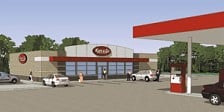Convenience stores rise above high gas prices

.floatimg-left-hort { float:left; } .floatimg-left-caption-hort { float:left; margin-bottom:10px; width:300px; margin-right:10px; clear:left;} .floatimg-left-vert { float:left; margin-top:10px; margin-right:15px; width:200px;} .floatimg-left-caption-vert { float:left; margin-right:10px; margin-bottom:10px; font-size: 12px; width:200px;} .floatimg-right-hort { float:right; margin-top:10px; margin-left:10px; margin-bottom:10px; width: 300px;} .floatimg-right-caption-hort { float:left; margin-right:10px; margin-bottom:10px; width: 300px; font-size: 12px; } .floatimg-right-vert { float:right; margin-top:10px; margin-left:10px; margin-bottom:10px; width: 200px;} .floatimg-right-caption-vert { float:left; margin-right:10px; margin-bottom:10px; width: 200px; font-size: 12px; } .floatimgright-sidebar { float:right; margin-top:10px; margin-left:10px; margin-bottom:10px; width: 200px; border-top-style: double; border-top-color: black; border-bottom-style: double; border-bottom-color: black;} .floatimgright-sidebar p { line-height: 115%; text-indent: 10px; } .floatimgright-sidebar h4 { font-variant:small-caps; } .pullquote { float:right; margin-top:10px; margin-left:10px; margin-bottom:10px; width: 150px; background: url(http://www.dmbusinessdaily.com/DAILY/editorial/extras/closequote.gif) no-repeat bottom right !important ; line-height: 150%; font-size: 125%; border-top: 1px solid; border-bottom: 1px solid;} .floatvidleft { float:left; margin-bottom:10px; width:325px; margin-right:10px; clear:left;} .floatvidright { float:right; margin-bottom:10px; width:325px; margin-right:10px; clear:left;}
Twenty years ago, more gas pumps were sprinkled throughout Des Moines, says John Knapp, who used to work in QuikTrip Corp.’s real estate division. But as the number of small gas stations has dwindled, said the agent for Iowa Realty Commercial, the industry has become dominated by larger stores owned by three major players: West Des Moines-based Kum & Go LC, Ankeny-based Casey’s General Stores Inc. and QuikTrip, which is based in Tulsa, Okla.
This shift has helped these convenience store chains continue to turn a profit despite rising gasoline prices that have squeezed margins on their highest-selling commodity by encouraging customers to come inside the store to buy new and diverse high-margin items.
“I think that the significant increase in the wholesale retail price of gasoline is a concern for everybody,” said Bob Myers, Casey’s president and CEO, “but it hasn’t stopped customers from coming into our stores.”
Knapp describes convenience stores as nearly “recession-proof,” because of people’s on-the-go lifestyles and dependence on their vehicles. Also, he said, convenience stores have done a great job tailoring their drink and prepared food items to cater to this culture and even compete with fast-food restaurants.
But with increasing sales of soft drinks, energy drinks, bottled water, coffee products and prepared food items, convenience store chains have found their old-store styles to be cramped for space. As a result, they have been undertaking major renovations of their stores to dramatically increase their size, creating one of the biggest periods of change in the industry.
New business, new style
Gas remains the biggest portion of a convenience store’s business, but it generates a diminishing portion of its profits.
Gasoline sales make up 70 to 75 percent of Casey’s total sales, but produce only 20 to 25 percent of its gross profit, said Chief Financial Officer Bill Walljasper. According to Casey’s fiscal first quarter report, gasoline margins were 4.1 percent, compared with margins of 34 percent for grocery and other merchandise and 60.5 percent for prepared food and fountain products.
“The reason for all the changes is to enhance the appeal to come inside the store and buy a higher-margin product other than gasoline,” Myers said. “If we were just in the gas business, we’d put a little booth out there and put as many pumps out there as we could and sell gasoline, but when you make 3 to 4 percent margin on gasoline, it’s difficult to cover your expenses.”
Casey’s has developed a new store design that increases its space by 1,000 square feet to make room for more coolers, an expanded coffee bar and more prepared food items. The company also is creating an inviting look for its stores, with stucco siding and brick, designed to encourage customers to come inside.
It is testing the concept on about 20 existing stores and 20 new stores this year, with the first O-style store (the evolution of its store designs is tracked with letters) opening a month ago in Illinois. Casey’s has several similar stores under construction in Greater Des Moines, including stores in Ankeny, Johnston and West Des Moines.
The biggest challenge will be bringing some of the new design elements to its nearly 1,500 existing stores through additions and renovations. “We’re taking different older-style stores and applying the newer concept and design to those, and then we’re going to sit back and measure what we think the improvement in sales are, because if it doesn’t make dollars and cents, if there’s not a return on our investment, whatever it might be, then we’ll likely not do that,” Myers said.
But already the improvements are showing promise as a profit booster, with grocery and other merchandise sales up 4.7 percent in the fiscal first quarter ended July 31 and prepared fountain and food sales up 12.3 percent, compared with a 0.5 percent gain in gasoline sales. If the company didn’t have a one-time charge of $2.6 million related to flood damages in the quarter, it would have set a record during the period, with earnings near $200 million.
Kum & Go LC also is having one of its best years ever for inside-store sales, said Kyle Krause, president and CEO. Though it has faced some pressures from the current economic situation, Krause said, “it hasn’t directly changed our growth strategy.”
As patronage at its stores has doubled in the past five years, Kum & Go has been in the process of increasing the number of gas dispensers at each store from four to eight or 10 and increasing the average store size by about one-third, adding more coolers, larger fountain and coffee stations and more room at the checkout area. It is renovating about five to 10 stores a year and is constructing 20 to 25 new stores this year.
“We’ve had to create a bigger environment to handle a larger (sales) volume and potentially assume greater growth in the future,” Krause said.
In renovating its older stores, Kum & Go looks to buy land adjacent to the property and then either razes the building to construct a larger store or builds an addition. If a larger lot can’t be secured, the company often sells the store, such as a recent sale of six stores throughout Greater Des Moines to Infinite Gas. In the past two years, the company has sold 30 stations.
QuikTrip has undertaken two major renovation projects in the past 10 years, which spokesman Mike Thornburgh said is “a pretty big ordeal,” with 502 total stores. The first involved expanding and enhancing its fountain drink and coffee bar stations, and the second, which is near completion, is adding QT Kitchens to each store. The kitchens can handle more prepared foods on site, including bakery items, sandwiches and salads. Just adding an on-site bakery has more than doubled pastry sales, Thornburgh said.
The average QuikTrip store now contains about 4,600 square feet, versus 3,000 square feet 20 years ago. Though inside sales have not overtaken gasoline sales, Thornburgh said, “it’s one of those deals of the right place at the right time. We were already in the process of planning for it and building convenience areas and getting stores ready for it before we had a huge spike in gasoline prices.”
Future changes
As these retailers focused on getting consumers to buy more than just gasoline continue to expand, big oil companies such as Exxon Mobil Corp. and ConocoPhillips have announced this year that they are leaving the retail business. An article on CNN.com said that Exxon Mobil is selling its 2,000 stations because “they aren’t profitable enough even with gasoline selling at $4 per gallon.”
The major gasoline retailers in this market say the oil companies are making more money selling wholesale gasoline and that they are not as focused on the consumer end.
If gasoline prices keep rising, Walljasper of Casey’s said, “it could potentially change the landscape of the c-store industry.”
The local market is fragmented, Walljasper said, with about two-thirds of all operators owning 10 or fewer stores, so some acquisitions could take place if market conditions remain unfavorable. But Myers said it depends on whether owners’ sentiment has changed. “There was a buyer/seller disconnect in past years, meaning those smaller operators were making a decent profit, primarily off of gas more than anything, and were not motivated to sell unless it was a premium price.”
Casey’s looks for a mix of acquisitions and new store construction, with a goal of increasing its roster of stores by 4 percent this fiscal year. Krause of Kum & Go said his company looks for acquisitions only if it makes sense in the market, but “it’s probably a little easier to build new.” It has acquired seven new stores in the past two years, compared with building 31 new stores.
“With the limited margins in gasoline and the credit card fees that are taking more and more margin dollars,” Knapp said, “the small operator just can’t survive.”








